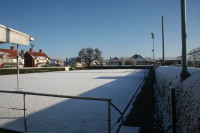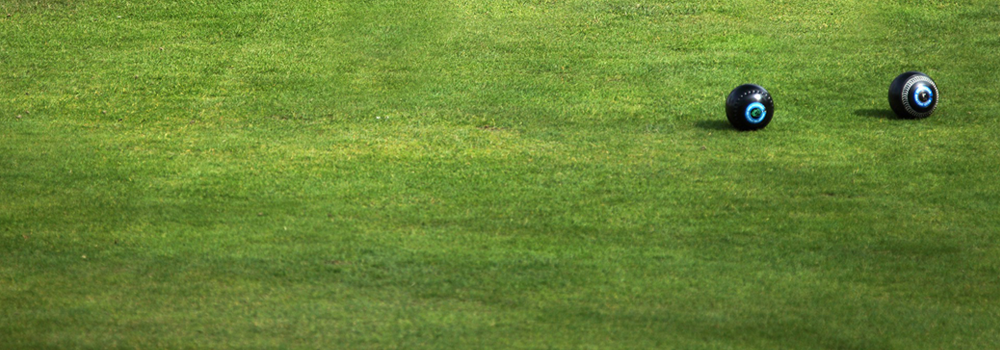
Tidying up the green surrounds - hedges, trees etc.; and ensuring your machinery is in good condition should be on your priority list.
Key Tasks for January

- Tip grass, if necessary, maintaining a winter height cut of 10-12mm
- Carry out inspection and maintenance of machinery and irrigation equipment
- Service equipment and replace any worn or damaged parts
- Check for diseases and pests, seek advice if necessary
- Clean up any leaf debris
- Spike, if and when possible, and only if conditions are right
- Maintenance of fences and hedges




As we enter mid-winter, January presents a continuation of good winter time agronomic practices, as described in the December diary.
Practices which should, as always, be driven by the climate. If warmer conditions prevail, then very light applications of fertiliser can be considered if the plant looks to be struggling. Be aware of waterlogged soils and low light causing stress which may lead to plants responding better to liquid applications. Try to aim for brighter days when the plant will be slowly photosynthesising, leading to better uptake.
Warm and wet provides opportunity for fungal pathogens to take hold. Keeping an eye on forecasts and applying the cell wall thickening calcium and plant defence stimulating phosphite are sound strategies backed up by research. Remember, contrary to traditional belief, iron does not harden turf, the element plays no role in physically strengthening or “hardening” the plant.
Iron is involved in the synthesis of chlorophyll and is essential for chloroplast and mitochondrial function due to its role within the electron transport chain. Thus, it is required for a wide range of biological functions including enzyme activation and plant respiration. In short, Iron will act as a catalyst for plant function and chlorophyll production, but remember magnesium is the central atom in the chlorophyll molecule so concentrate on making sure magnesium levels are sufficient first.
The other thing to remember about iron is it is a micronutrient, required in low levels by grass plants, with the majority of soils containing an excessive quantity which is antagonistic to the availability and uptake of; Zinc, Phosphorus, Copper, Manganese, Calcium
It is worth bearing in mind that, among other things:
- Zinc is important for – cold weather tolerance
- Phosphorus is important for – respiration and energy transfer
- Copper is important for – stress response
- Manganese is important for – resisting root pathogens
- Calcium is important for building thick cell walls able to withstand abiotic (environmental) and biotic (pathogenic) stress.
As we can see, appropriate levels and availability of all these elements are going to provide the plant with more direct assistance in withstanding midwinter challenges than iron.
Many people will state that they experience iron curing disease and, for many years, iron applications have been the perceived wisdom throughout the winter. However, effect is not always directly correlated to cause.
Liquid iron fertilisers, soluble iron and iron in granular fertilisers is present as ferrous sulphate. These ingredients have a low pH, generally around pH 2-3. Research undertaken by ICL at the STRI consistently shows that when ferrous sulphate is applied in the traditional manner i.e. prophylactically as a preventative, it offers suppression of Microdochium nivale barely distinguishable from control. Applied as a curative, it offers around a 50% reduction. On the face of it, that may sound reasonable as a curative. It is worth considering why it has some effect as a curative. The answer is that the acidity is antagonistic to the disease pathogen, at the same time that same acidity is antagonistic to plant beneficial microorganisms living in the phyllosphere (on the leaf) and in the rhizosphere (around the root).
A modern more technically astute way to achieve the same effect is by applications of phosphite PO3 (note; not phosphate P2O5) which, by acting to stimulate natural plant defences, is a way to achieve the same effect without the negative effect on plant beneficial microorganisms.
Phosphite works by stimulating plant defensive substances such as phytoalexin, which attacks the disease as it attempts to invade. Stimulation of plant carbon compounds assist in strengthening cell walls and further signal mechanisms proactively alert other cells to the danger.
As we zoom at breakneck-speed towards the 2020s, this kind of science based informed knowledge, as a result of modern analytical techniques and understanding, will increasingly inform turf managers approach to healthy grass plant management.
The suggested points to take from this are two fold
- Beware simply repeating traditional thinking out of habit.
- Seek to understand the why and how of all products you apply.
On that theme, January is traditionally a time for preparation; fertiliser programmes will be at the forefront of everyone’s minds but consider also;
- Wetting agent programmes
- Fungicide programmes
- Insect pest control programmes
Writing things down, such as the date to put out chafer grub monitoring traps or apply the first polymer wetting agent, can be the start of a plan likely to be actioned.
Finally, and probably the most important agronomic principle for the winter months is to pay very close attention to the most important ingredient in your turf management armoury; yourself.
Hopefully, refreshed after a Christmas break now is a great time to assess and take action to plug gaps in your knowledge. We all have them, and the danger is we can quickly trick ourselves into thinking ‘everyone else knows more than we do, when they don’t’. It is also easy to fall straight back into the routine and ‘not have time’, but it is important to make time.
Across the industry, 2017 has been yet another year of environmental and legislative challenges, with 2018 and beyond set to continue that trend.
The prepared will prevail and the first step of preparedness is stopping, considering and openly taking in knowledge.
- BTME is running during the third week of January and presents a fantastic opportunity to gain knowledge through the continue to learn programme.
- The sum of human knowledge is at our fingertips via the internet.
- Don’t be afraid to ask questions of peers and be open to considering new approaches.
- Quiz Technical Sales Managers who visit your site, the good ones will have sound answers and may even be able to offer complementary training information to you and your teams from either themselves or Technical Managers.
- Most importantly, remember: Stop – Make Time – Consider – Openly take in knowledge – Be Prepared
It is important to maintain machines by carrying out regular servicing and repairs.
With minimum work needed on the green, use the time to take some machines out of operation for an overhaul.
- Keep machines overhauled and clean
- Maintain a stock of consumables for your machinery, replace worn and damaged parts as necessary.
- Keep an eye on your material stocks (seed, topdressing, petrol, oil), remembering to replenish as required.
- Service machinery and equipment - changing oil / air filters and greasing up moving parts and sharpening mower blades.

You can learn about maintaining a bowls green in the comfort of your own home and in your own time. This newly developed course consists of a number of videos with assessment questions, and an accompanying hard copy Course Manual. The Online Course is Lantra accredited and provides you with all the basic knowledge required to maintain a green over a 12 month period.
Pitchcare is the only provider of LANTRA accredited training courses in the maintenance of Bowls Greens. More information
We can also arrange Lantra accredited training on site to groups of 6 – 10 people. Email Carol Smith for information.
The Course Manual at just £30 is available for purchase separately.
Current Forum discussions which could be of interest


